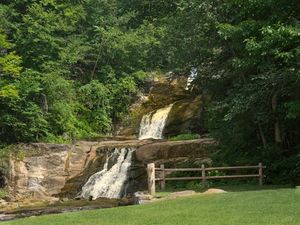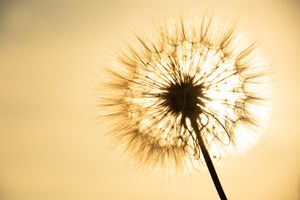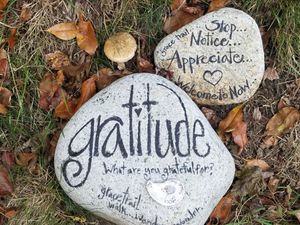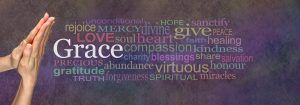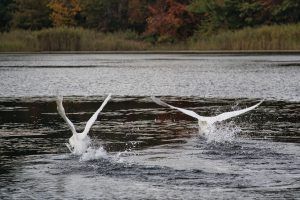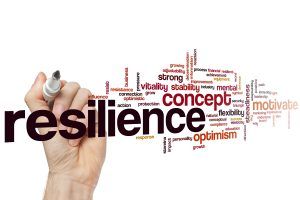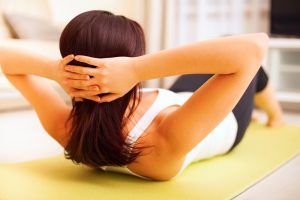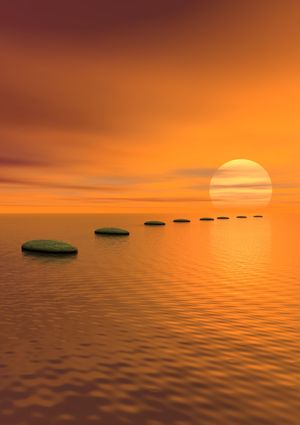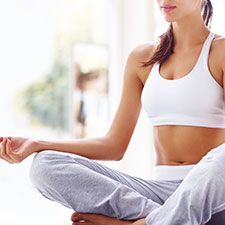Blog
Be More Like Zebras A Somatic Approach to Short-Circuiting Holiday Stress
“Nature does not hurry, yet everything is accomplished.”
Lao Tzu, Tao Te Ching
“The mind is embodied, not just embrained.”
Antonio Damasio, The Feeling of What Happens
The Weight of the Holiday Season
This time of year is often described as a season of joy, fellowship, and hope. For many people it does not unfold that way. Some stressors are built into the holidays themselves. Celebrations become overextended. Traditions that once felt meaningful can turn into obligations. Encounters with certain people or places stir old patterns and difficult memories. The pace of events increases and the sense of pressure rises. What could nourish us ends up feeling heavy. The body and mind both carry the weight, often more than we recognize.
Yoga and the somatic practices that support it do not avoid these realities. They provide a way to meet them. Movement, breath, and awareness soften the patterns that accumulate during demanding times and help restore the steadiness that often gets lost. This is not about perfecting the season or forcing a particular feeling. It is about creating enough internal space to access the parts of this time that can actually support us.
moreMotion is the Potion: Moving Well at Any Age
"Motion is the poition" may sound like a pithy cliché, but behind it lies a real key to healing and to feeling better in body, mind, and spirit.
We’ve all heard that “movement is good for us.” And it’s true. But as the years add up, so can the aches and pains. They creep in slowly, making us wonder if moving less might be the safer choice.
Or we go to the gym, pick up some weights, or head out for a jog and think, “Well, that must be the motion I need.”And sometimes it helps. But just as often, it backfires, leaving us sore, tense, or even discouraged.
The irony is that it isn’t too much motion that gets us into trouble. It’s the lack of the right kind of motion. The kind that nourishes and restores. The body craves this: movement that frees the breath, eases tension, and restores natural rhythm.
When Movement Hurts
This is the turning point for many people. They want to stay active as they age, but movement itself has started to feel unreliable or even painful. The temptation is to stop — to give up activities that once brought joy.
But pain is not always a sign to quit. More often, it’s a signal to move differently. Aches and stiffness are often the body’s way of saying, “Something needs to change.”
moreThe Quiet Thread: Rethinking Movement from the Inside Out
“Attention is the beginning of devotion.”
— Mary Oliver, Upstream: Selected Essays (Goodreads)
“In an age of speed, I began to think, nothing could be more invigorating than going slow. In an age of distraction, nothing can feel more luxurious than paying attention. And in an age of constant movement, nothing is more urgent than sitting still.”
— Pico Iyer, The Art of Stillness: Adventures in Going Nowhere—(Goodreads)
Beyond Performance
We often talk about movement as if it is a test of discipline or a path to performance. Even in yoga, especially in fitness settings, the emphasis can easily shift toward form, achievement, or simply keeping up. Beneath that pace and pressure, there is another current, quieter but no less powerful.
A Different Kind of Yoga
A yoga practice imbued with somatic principles and awareness lives along this quieter thread. It is not a separate category or style. It is a way of inhabiting movement that listens more than it pushes and responds rather than imposes.
moreA Fresh Start: Aligning with Spring’s Rhythm of Change
Making Movement Mean More
"Movement is the song of the body."--—Vanda Scaravelli, Awakening the Spine
The Opportunity Within Change
As time goes by, recovering from winter and other disruptions to our movement life becomes not just necessary but an extraordinary opportunity—one that allows us to deepen our understanding, take a more active role in our well-being, and cultivate the wisdom to support us along the way.
Rethinking Age and Limitation
We can and often do blame stiffness, fatigue, and discomfort on age, but doing so can close our eyes to the potential for growth. Challenges that manifest in our bodies don’t have to signal decline; they can be invitations to move differently, to restore what we’ve lost, and even to improve.
Awareness as Recovery
Movement isn’t just about preventing things from getting worse; it’s about making things better. When we move with awareness, we don’t just maintain—we recover more quickly, regain ease, and sometimes even move better than before. Rather than layering new compensations over old limitations, we create the conditions for lasting improvement.
moreEmbrace Simplicity, Patience, and Compassion this Holiday Season!
“Simplicity, patience, compassion. These three are your greatest treasures.
Simple in actions and thoughts, you return to the source of being.
Patient with both friends and enemies, you accord with the way things are.
Compassionate toward yourself, you reconcile all beings in the world.”
— Lao Tzu, The Tao te Ching— aphorism 67
12/25/24
A Season for Reflection
In this season of giving, with its invitation to enjoy times of peace and joy, I am grateful to share this movement, mindfulness, and growth journey with each of you.The quiet moments of winter invite us inward to pause and reflect on our path, however that is unfolding for you.
The Practice of Self-Compassion
The holidays can invite us to discover gentler ways of being. As Lao Tzu reminds us, our practice begins with compassion toward ourselves. Through yoga and self-care, we find what needs tending and come to learn that lasting change can only grow from self-forgiveness.
moreDiscovering New Paths to Gratitude This Thanksgiving
"Be content with what you have;
rejoice in the way things are.
When you realize there is nothing lacking,
the whole world belongs to you."
Lao Tzu from the Tao te Ching, from Indistatus.com
11/26/24
I hope you’re enjoying your Thanksgiving.
Every year at this time, we are invited to take time to cultivate an appreciative attitude toward what we may often take for granted. Called gratitude practice, it is a call to regularly commit to enjoy the healing possible of finding and feeling gratitude in our lives.
In the spirit of the Lao Tzu quote above, it is through moments of compassionate reflection that we may release the hold of any momentary turmoil and become aware of the friendships, love, abundance, and moments of calm, peace, and grace already in our lives. Embracing acceptance and cultivating gratitude for our circumstances, ourselves, and others has been a profound healing practice for many.
moreKeep Growing with Awareness: Yoga and Self-care for the Rest of Your Life:
"When patterns are broken, new worlds emerge." —Tuli Kupferberg from success.com(1)
One of the most impressive aspects of a vital Yoga and meditation practice is realizing its ability to evolve to serve our needs and goals throughout our lifespan. As our needs change with age or other circumstances, so may what we do to meet them. Building persistence and consistency in your work on can build a foundation of resilience as challenges arise and we change over time. When life throws its curves and obstacles we have inner resources of awareness, calm, physical health, and more to draw upon to deal with them.
Over the last few years, the discipline of Yoga itself has changed beyond imagination as present-day methods have refined and deepened the work we can do to remain happy, vital, and active throughout our lives.
The Evolution of Yoga
Classic Yoga practice has evolved in the 21st century by integrating modern techniques. These include neuro-muscular movement re-patterning and other Somatic movement education work. This integration has allowed Yoga and holistic healing arts to flourish.
moreChanging Lives, Changing Yoga
5 Steps to Sustaining a Vital and Evolving Yoga and Self-Care Practice
"Wherever you are is the entry point," Kabir from goodreads.com
"Change is the only constant." Heraclitus fromarapahielibraries.org
Getting involved in Yoga and its allied self-care practice is often called a journey.
You may be beginning this journey, learning the physical poses(Yoga Asana) or meditation basics in a Yoga class or online, wondering if it has to be such a struggle. It can seem like you are fighting your body, not knowing if you are doing things right, and getting more stressed despite your best efforts. Still, with all that, you usually feel better when you're done, which keeps you going.
If you have been taking Yoga for many years, you may have reached the point where you wonder how to deepen your yoga practice to make it more fulfilling to your mind, body, and spirit and integrate these benefits into your life.
Changing Bodies Changing Yoga
moreSustaining Joy This Summer: Healthy Foundations for an Active Life!
Summer Foundations for Movement and Well-Being
Summer draws us outward. The days invite more movement, more activity, and more connection. Yet the body’s quiet wisdom reminds us that ease and freedom come from within. When we keep our foundational practices steady, we meet the season with comfort, strength, and curiosity rather than tension or fatigue. These moments of awareness are small, but they shape how we experience everything else.
Body and Mind Working Together
Mindful movement supports both physical health and emotional steadiness. It helps sustain energy and calm so you can meet the rhythm of summer life with greater ease.Take time this summer to maintain your body’s foundation through yoga, somatic movement, or any mindful practice that feels natural to you. This kind of care strengthens your base for daily life, recreation, and vitality. Think of it as quiet work that restores connection and confidence.
Set Yourself Up for Success
A few minutes of mindful attention before activity can prevent strain and make movement more fluid. The more you listen and adjust, the more freedom you’ll find. Bring your practice into nature. Move in a park, at the beach, or wherever you find stillness and fresh air. Let the sunlight and space around you remind you that balance begins within.
moreBreathing Basics: Simple Practices to Breath Better to Feel Better
When the Breath wanders, the mind is also unsteady. But when the Breath is calmed, the mind is still, and the yogi achieves a long life. Therefore, one should learn to control the Breath. ~Svatmarama, Hatha Yoga Pradipika
Smile, breathe, and go slowly. ~Thích Nhất Hạnh
Why Breathwork Matters
Many now regard yoga as one of the most potent disciplines supporting our health and well-being. Many of its techniques help release built-up physical and mental tension, as well as the accumulated effects of stress in our lives.
Yoga works uniquely with mind and body by integrating conscious (mindful) movement and formal poses called asana, relaxation techniques, meditation, and controlled, conscious breathing to help release physical tension and calm the mind. Of all these practices, the skillful use of breathwork is perhaps the most important catalyst for the transformative changes yoga and related self-care practices can bring to our lives.
Understanding the Breath in Yoga
From the beginning of practice, students learn controlled and conscious breathing techniques called Pranayama. Breathing is used to access and direct vital energy (prana), focus attention, and relax the body and mind.
moreNeuroplasticty and Deeper Change: Somatic Exploration in Yoga for Rewiring the Brain-Body Connection
- Changing Brain, Changing Lives
The brain and body interact in response to what we do, feel, and think. This is an automatic process of which we are largely and happily unaware under normal circumstances.
However, when things go awry, the body and mind communicate this to us through pain, movement or mental challenges, and other forms of distress that come to awareness. Reading and responding to the language of these messages can be the key to being well and feeling your best at any age and in any circumstance. This can at first seem daunting and overwhelming, but there are ways to improve our ability in this realm.
Here, yoga and movement serve as a somatic exploration, a holistic approach that can deepen how we access and work through our neuromuscular system to create a foundation of flexibility and movement health. You can change at the source, your brain, and feel the body follow along. Unlike traditional stretching, somatic movement reprograms dysfunctional patterns. It is about neuroplasticity, changing how our brain communicates with our body.
Dynamic Flexibility: Beyond Static Stretching
A somatic approach to movement fosters functional flexibility. It is not just about lengthening muscles; it is about making them responsive. Imagine moving through life easily, whether reaching for a high shelf, playing your favorite sport, enjoying your travels, spending time with your grandchildren, or chasing a playful dog.
moreNavigating the Edge in Yoga: A Mindful Approach to Healthy Movement and an Active Lifestyle
As the longer and brighter days of spring unfold, so many of us are inspired to embrace life’s activities anew. To create a healthy foundation for these activities, we can step onto our yoga mats with renewed intention and heightened awareness.
In this blog post, we’ll explore how a somatic movement approach to Yoga can lay a solid foundation for safely and healthily increasing activity levels..
1.) The Edge: Not a Precipice, but a Boundary
When we talk about the “edge” in yoga, it’s not about teetering on the brink of danger. Instead, it signifies the boundary of comfort and challenge—a place where we can explore without pushing too far. It is at the edge where authentic growth occurs. Let’s approach this edge mindfully.
2.) Responsiveness Over Reactivity
Difficulties may arise, but reactive blame won’t serve us well. Instead, let’s respond responsibly. When discomfort or injury occurs, avoid pointing fingers at the activity, our age, or the tools we use. These challenges are opportunities for growth.
4.) Thriving Organisms: Our Living Blueprint
Remember, we’re living organisms designed to thrive on movement. Our muscles build strength, and our joints crave flexibility. Metabolic balance, organ health, and resilience—all depend on our ability to move mindfully.
moreInspiration for a Happy New Year with Yoga
"Once one has one's feet on the path of healing, life takes on new meaning, and time is no longer the enemy. Each step becomes every step, the healing within liberation, the possibility of freedom. And life becomes exciting..."--- from Guided Meditations, Explorations, and Healing, p. 85, by Stephen Levine, Anchor Books-Kindle version. 1991
Helping yourself feel better and walk on the path of wellness can be a matter of simplifying things in your life and adjusting priorities.
Most of us come to Yoga and Meditation seeking solutions to specific challenges. We look for the practice that we intend to devote our time and energy to bring us answers and solutions to our specific concerns. Finding the right kind of practice and teacher is the first and often the most exciting and tentative part of the journey.
Like most endeavors of any significance after the initial excitement and positive experiences, sustaining motivation can be a fluid, sometimes tricky thing. This may be true, particularly after the initial inspiration lessens, our goals have been met, or if they haven’t been met according to initial expectations.
Riding the ups and downs of the healthy change process can require infusions of inspiration, reminders of what there is to gain, and re-commitment to the journey. Persistence is vital, and remembering the possibilities of these wonderful practices can help with that.
moreNew Year's Reflections and Renewing Our Intentions for 2024
I hope you are doing well and enjoying happy times with those you love.
Thank you all for another year together on this journey!
As we approach the end of the year, it's a natural time to reflect on our lives and experiences. For those of us on a self-care journey, this reflection can be an opportunity to appreciate how far we've come, acknowledge our strengths and vulnerabilities, and set intentions for the year ahead.
So to reiterate what Krishnamurti describes above, when we embrace who we truly are, we open ourselves up to the possibilities of deeper transformation.
To support us all In our day-to-day affairs as well as our larger life journey, the sage Lao The offers us these thoughts:
“Simplicity, patience, compassion. These three are your greatest treasures. Simple in actions and thoughts, you return to the source of being. Patient with both friends and enemies, you accord with the way things are. Compassionate toward yourself, you reconcile all beings in the world.”Lao Tze from the Tao te Ching, aphorism 67 from Keystrokes from Kimberly
moreClass Spotlight: Miracles in Motion through Somatic Exploration
*“What makes a person old? Some people think it is the wrinkles, other say it is stodgy attitudes. But really the culprit is our habits. When we unlearn old habits and create new ones, we make our bodies and minds younger, stronger and more flexible.” Frank Wildman, CFD, PhD
Our "Yoga Basics–Ageless Ease Through Somatic Exploration" class has evolved in response to this process. This class, which you can attend either online or in person on Wednesday at 6:00 p.m. at the Shoreline Center for Wholistic Health in Guilford, is a unique blend of somatic neuro-muscular performance-enhancing movement developed from a clear understanding of how the body and mind work as an integrated whole.
Rather than focusing solely on traditional stretching and strengthening, this class incorporates transformative musculoskeletal re-training principles to enhance brain/body connections and influence how we move. Transforming how we move at this fundamental level can help you learn or improve efficiency, comfort, and performance in all our endeavors.
It features simple, progressive, and mindful movement routines designed to identify and release hidden bodily tension, thereby restoring the natural comfort and fluidity of movement that may have been lost due to these tensions.
moreThe Yoga of Somatic Exploration: Your Path to a Healthier, Happier You at Any Age
Every year at this time, when summer activities wind down and our fall schedules and obligations resume, we can re-assess our needs and approaches to self-care. So it is with our work here as the evolution of our teaching and what we offer to help you on your journey continues. This has led us back to the future, to the practice of a Yoga of conscious awareness that inspired and began my journey over 30 years ago.
To support the changing needs as years pass, our approach to our needs for self-care deserves special attention and care. This is where the power of yoga and mindful movement comes into play. Whether in your 40s, 50s, 60s, 70s, or beyond, practicing yoga and mindful movement can benefit your life immensely. Let's explore how embracing these practices can lead you to a healthier and happier you.
The Ageless Magic of Yoga and Somatic-based Mindful Movement:
Yoga isn't just for the young and flexible—it's for everyone seeking a more vibrant life. Mindful movement practices, like yoga, gently guide you toward improved well-being, flexibility, and vitality.
Why Yoga and Mindful Movement Matter:
Embrace the simple joy of movement as you navigate the journey of aging. Yoga and mindful movement offer you a toolkit to support your goals that may include:
moreSomatic Movement: The Key to Unlocking Your New Possibilities in Yoga
Movement Wellness From Inside Out
Are you looking to take your yoga practice to the next level? If so, you might consider incorporating somatic movement into your routine. Somatic movement is a practice that focuses on the internal experience of movement and can help you develop greater awareness of your body and how it moves. Incorporating somatic movement into your yoga practice can unlock new levels of flexibility, strength, and control.
This way of Yoga is unique and powerful in the ways it can help to release patterns of tension and restriction, leading to significant improvements in flexibility, range of motion, and overall movement quality.
In this article, we will explore the benefits of incorporating somatic movement into your yoga practice, including improved safety and effectiveness, a deeper experience of yoga, and addressing underlying causes of physical dysfunction.
What is Somatic Movement?
Somatic movement is an approach that emphasizes the mind-body connection and focuses on using awareness to release patterns of tension and restriction. Somatic movement practitioners believe that many physical dysfunctions are caused by chronic patterns of tension that are stored in the body and can be released through gentle, mindful movement.
moreThe Yoga of Gratitude–Appreciating and Creating The Life You Love
Gratitude unlocks the fullness of life. It turns what we have into enough and more. It turns denial into acceptance, chaos to order, confusion to clarity. It can turn a meal into a feast, a house into a home, a stranger into a friend.
Melody Beattie from AZ Quotes.com
As we approach Thanksgiving, we can take the opportunity to celebrate the power of gratitude to help us grow as a practice and a way of being throughout the year.
Through our day-to-day- navigation of the stressors, challenges, gains, and losses of our lives, it is easy to lose sight of or genuinely appreciate the positive aspects of our lives. When this happens, we can succumb to taking these positives for granted or forgetting them entirely. If this happens, it can lead to negativity and potential neglect toward those aspects and people we love and enjoy.
Losing the experience of gratitude in our lives can rob us of some wonderful positive feelings that can, in turn, limit our understanding of happiness. When that happens, we can feel our lives become more limited, and any awareness of the possibilities life has to offer can be diminished.
more“Sthira Sukham Asanam” [A Yoga Pose is a] Comfortable Steady Seat
“Sthira Sukham Asanam” — A Comfortable, Steady Seat----Yoga Sutras of Patanjali: Ch. 2.46–2.48
The popular yoga with which most of us are familiar is the yoga asana (literally “seat” in Sanskrit) practice that provides so much benefit on a physical and mental level. Flexibility, strength, physical tone, and the sometimes surprising depth of stress relief are often immediate and palpable. This is, of course, why it has become so much a part of our lives in this culture.
Beyond Physical Culture
When these largely physical practices are interwoven with even the most basic breathing and awareness practices, the benefits for the practitioner in overall well-being can skyrocket.
I agree with those who observe that when the deeper aspects of awareness and breath are not included, yoga practice naturally emphasizes its physical side. When those elements are woven in, the same poses become a way to uncover clarity and mindfulness in action on and off the yoga mat. Critically, this allows the brain and body to learn and adapt in an organic way that supports their natural processes of change and integration. In this way, movement becomes you.
more

